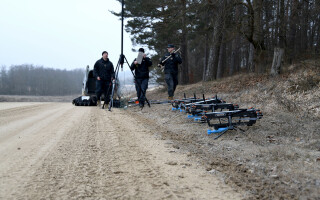RadioBio research effort aims to find the role of electromagnetic signaling in biological systems
NewsFebruary 15, 2017

ARLINGTON, Va. Defense Advanced Research Projects Agency (DARPA) officials launched a new program that seeks to establish if purposeful electromagnetic wave signaling between biological cells exists - and if evidence supports that it does - to determine what information is being transferred.
The RadioBio program is a research effort and even if it proves that electromagnetic signal occur between cells applications are years away, officials say. The validity of existing and new electromagnetic biosignaling claims requires an understanding of how the structure and function of microscopic, natural antennas are capable of generating and receiving information in a noisy spectral environment.
“There are many complex interactions within and between cells, so determining if electromagnetic waves, which could be low or high frequencies, somehow play a role in transmitting and receiving meaningful signals through what might be an ion-rich, aqueous solution is a significant challenge,” says Mike Fiddy, DARPA program manager. “If we can prove that purposeful signaling is happening, the next step would be to discover how the process works. This insight could eventually lead to a broad range of technologies important in biology as well as new small antenna designs, and other innovative concepts for communication systems in ever increasing cluttered electromagnetic environments.”
During Phase 1, performers will be asked to theoretically model and simulate hypothesized electromagnetic signaling pathways and then experimentally test those theoretical predictions.
“One of the greatest challenges of the program will be to develop theoretical and numerical models that can describe the properties of near-field, time-varying, sub-wavelength-size biological structures that function as antennas,” Fiddy says. “To overcome such difficulties, RadioBio seeks expertise in antenna design, theoretical and structural biology, biochemistry and other related disciplines.”
In Phase 2, the goal would be to independently develop test beds to replicate, confirm, and demonstrate the pathways modeled in Phase 1 and reveal design principles potentially relevant to biological or other applications.
A webcast Proposers Day for the RadioBio program is scheduled for February 21, 2017. A Special Notice with details is available here.
Read more on the electromagnetic spectrum:
Electronic warfare & electromagnetic spectrum focus of ONR program
Electromagnetic spectrum R&D contract won by Alion Science and Technology
DARPA spectrum challenge chooses teams to expand spectrum access






